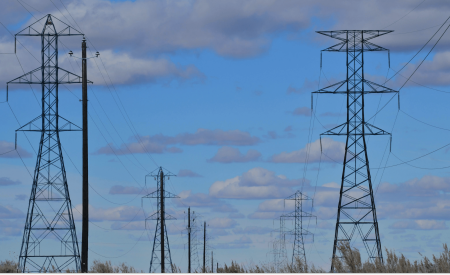We enable you to make better decisions about your energy operations.
Energy21: your implementation guide for the European liberalized energy markets.
Energy21 (established in 1997 under the name GEN) turned 25 this summer. The perfect milestone to take a step back and take a look at the way the European energy landscape has changed over the past years and will change in the years to come.
 1995-1998: preparing the liberalization of the energy market.
1995-1998: preparing the liberalization of the energy market.
The EU “energy legislation packages” have always been the driving force behind local market changes. At the turn of the twenty-first century, focus lay on liberalization of formerly state owned energy companies; the provincial and municipal energy companies. To facilitate a free energy market, new market roles and players were required, along with a modernized means for communication.
2000-2004: introduction EDINE communication between TenneT, network operators and program representatives plus the introduction of EDIGAS communication between GTS, network operators, suppliers and shippers.
Energy21 was already active in the development of wind power projects, when we witnessed the dawn of the EDINE (and later also EDIGAS) communication protocols and the establishment of TenneT (and later also Gasunie for the gas market). The first EBASE software packages were installed onsite for various BRP clients, supporting them in processing market messages and enabling them to create e-programs and t-programs. This required them to communicate their day ahead balance positions with the TSO.
2006-2009: adoption and execution of ‘wet onafhankelijk netbeheer’.
After the formal adoption of ‘wet onafhankelijk netbeheer’, Dutch energy champions Essent and Nuon were split into grid companies Enexis and Alliander and the commercial companies Nuon and Essent. It meant a formal and definitive split between the monopolies of the grid and the free market activities of production and supply. Essent and Nuon were later sold to European energy giants Vattenfall and RWE.
New energy companies entered the Dutch energy arena, some as local start-up companies, others as branches of larger European players. The commercial domain diversified and consumers could pick any supplier they preferred. Initially this led to increased market competition, and many customers (B2B and B2C) switched or even hopped from one supplier to another. During this period Energy21’s client base steadily grew.
2012-2015: preparations and implementation of ‘Stroomopwaarts’.
In some cases, energy companies would accept risks that were beyond their control, leading to bankruptcy of individual companies. When Trianel went bankrupt in December 2012, it even caused financial uncertainty for a whole string of companies throughout the energy value chain. Energy21 witnessed this all from the ‘navigator’s seat’, since at this time the majority of the Dutch BRP data was flowing through our client’s EBASE installations. Legislators, regulators and energy companies alike were forced to acknowledge just how complex, legal and financial the energy products and relations had become.
The following years, legislation and market regulation focused more and more on improving market liquidity, integration, transparency, auditability and liability. More small energy suppliers were forced to stop their operations, because they could not adhere to the standards of a modern energy company. Market program ‘Stroomopwaarts’ ensured that the energy supplier would from then on be the direct point of contact regarding everything non-meter/grid connection related.
2017-2020: EU focussing on transparency, liquidity and a bigger share of renewable energy in the energy mix.
With all these developments in our rear view mirror, a staggeringly steep increase of renewable (solar pv and wind) production capacity and even more ambitious EU guidelines to be implemented, the energy domain is now more thriving and exciting than ever. Marginal cost prices for energy used to be determined by fuel prices, capital cost, maintenance and a series of risk premiums. However, renewable energy production introduces near zero marginal cost prices since prices for sun and wind are zero. At the same time, renewable energy sources cause challenges to the stability of the energy system as a whole.
First of all, these sources require full connection capacity, while it’s only used a fraction of the time, meaning that the available system capacity is not fully utilised. Second, these sources introduce additional challenges for keeping the system balanced and thereby the power/energy quality within its required limits. At this moment these challenges lie completely within the regulated domain of the TSO’s and grid operators. However, regulated and commercial parties are running multiple experiments in which they cooperate to find attractive solutions for these challenges.
Improved battery technology, a hydrogen economy, nuclear fusion and power-heat-power are some of the technologies that may provide a piece of the puzzle. However, one thing becomes evident: operations of all energy assets must be flexible and their use must be continuously monitored for risk management, settlement and auditability purposes. Energy21 expects an exponential growth in the required connectivity (p2p, IoT, virtual power plant, et cetera) and resulting data flows over the next five to ten years.
2021-2025: Allocation 2.0 (tranches 1-4) ➞ improvement allocation process as a means to reduce imbalance and reservation demands PV-parties.
Energy21 is actively involved in a number of trial projects. During these projects we’re often acting as a well-informed guide on how the energy markets operate and how value can be created. At this moment, Energy21 is also helping ‘balance responsible clients’ to implement a market model change in which they will be allocated on the basis of actual smart meter values – contrary to the theoretic profiles that were used for this purpose before. This allows the allocation market process to become a closed loop within four months instead of eighteen.
One thing is crystal clear: a lot has happened and since we’re operating in an ever-changing market, we’re far from done yet. At Energy21 we always strive to be on top of the latest developments, so we can prepare our clients in time and help them implement these changes in a sustainable manner. To support this, we’ll share some new insights with you in the coming period. Stay tuned!


 Close
Close 
.jpg?resolution=450x275&quality=95)

